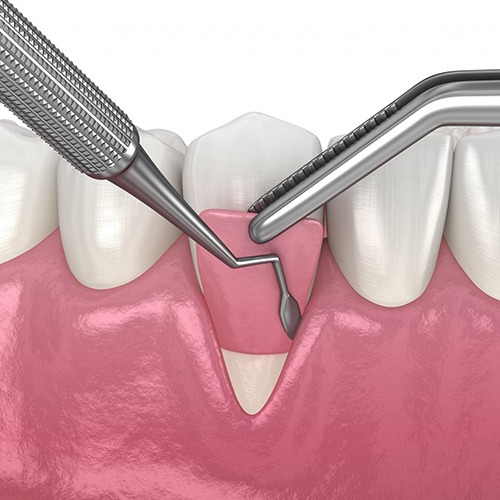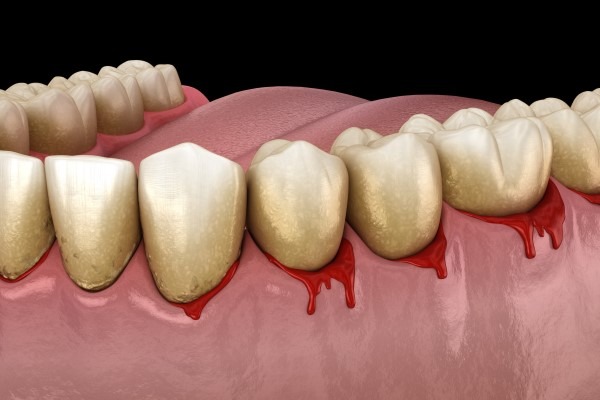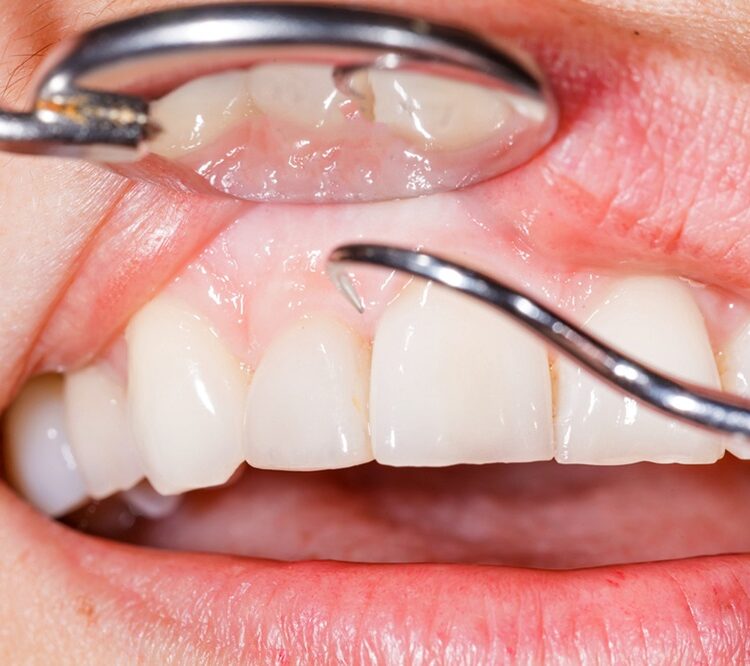
Periodontics (Gum)
Periodontal (Gum) Disease Therapy
Periodontal (Gum) Disease directly attack the gums and bone tissues that support your teeth.
The problems start with plaque, which is a sticky, nearly invisible film that covers your teeth. If the plaque is not removed, it hardens and turns into calculus or tartar. Then, if the calculus is not removed, the bacteria in the hardened plaque slowly destroy the gum and bone tissue.
Advanced Dentistry
High Quality Equipment
Comfortable Office
Friendly Staff
At the beginning stages of the disease, you will likely not experience any pain, although you may later experience one or more of the following symptoms:
- Red, swollen or bleeding gums
- Loose teeth due to bone loss or weakened tissues that support the teeth
- New spacing between teeth, which is caused by bone loss
- Persistent bad breath from bacteria; pus around teeth or gum, which is a sign of infection
- Receding gums, or tenderness or discomfort caused by the presence of plaque, calculus and bacteria.
WHEN DO I NEED A GUM SURGERY?
One example is a failed root canal procedure. A requirement in such a circumstance may be an apicoectomy, which a type of gingival surgery performed to remove the apex (or root tip) and a filling procedure which seals the root from further infection. Your teeth are held firmly in place by very strong roots that have grown from the jawbone. The end of each root is referred to as the apex. The apex is where blood vessels and nerves enter the tooth. Root canal treatment cleans the canal and removes infected/inflamed tissue in the root. Tooth roots are extremely complex and there are sometimes tiny branches that cannot be cleaned and/or sealed during a traditional root canal. Unfortunately, this means that infection/inflammation sometimes perseveres after root canal treatment. If left untreated, infected roots (in addition to causing much pain) can infect and damage other area in the mouth as the infection spreads to damage other teeth as well as cause jawbone regression.


You should be aware that smoking increases your risk for periodontal disease, and that periodontal disease is considered to be the number one reason for tooth loss.
Some recent research links this disease to various ailments such as stroke, bacteria pneumonia, diabetes, cardiovascular disease, and an increased risk for complications in pregnancy.
WHAT IS GUM SURGERY?
Gingival surgery, also called gum surgery, is often a crucial procedure that treats gum disease; however, it also is a procedure that improves the appearance of the mouth around the teeth and therefore the smile. Gingival surgery may be an elective procedure for appearance, but if you have gum disease it may be a necessity. During gum surgery, tissue that is deemed discolored, extra or unsymmetrical is removed, shifted and/or gum tissue may be grafted to the gum defect. Also, the gum line can be altered using special instruments. Stitches may be necessary to close incisions.
HOW LONG IS RECOVERY TIME AFTER GUM SURGERY?
SCHEDULE YOUR INITIAL CONSULTATION WITH OUR TRENTON DENTIST!



